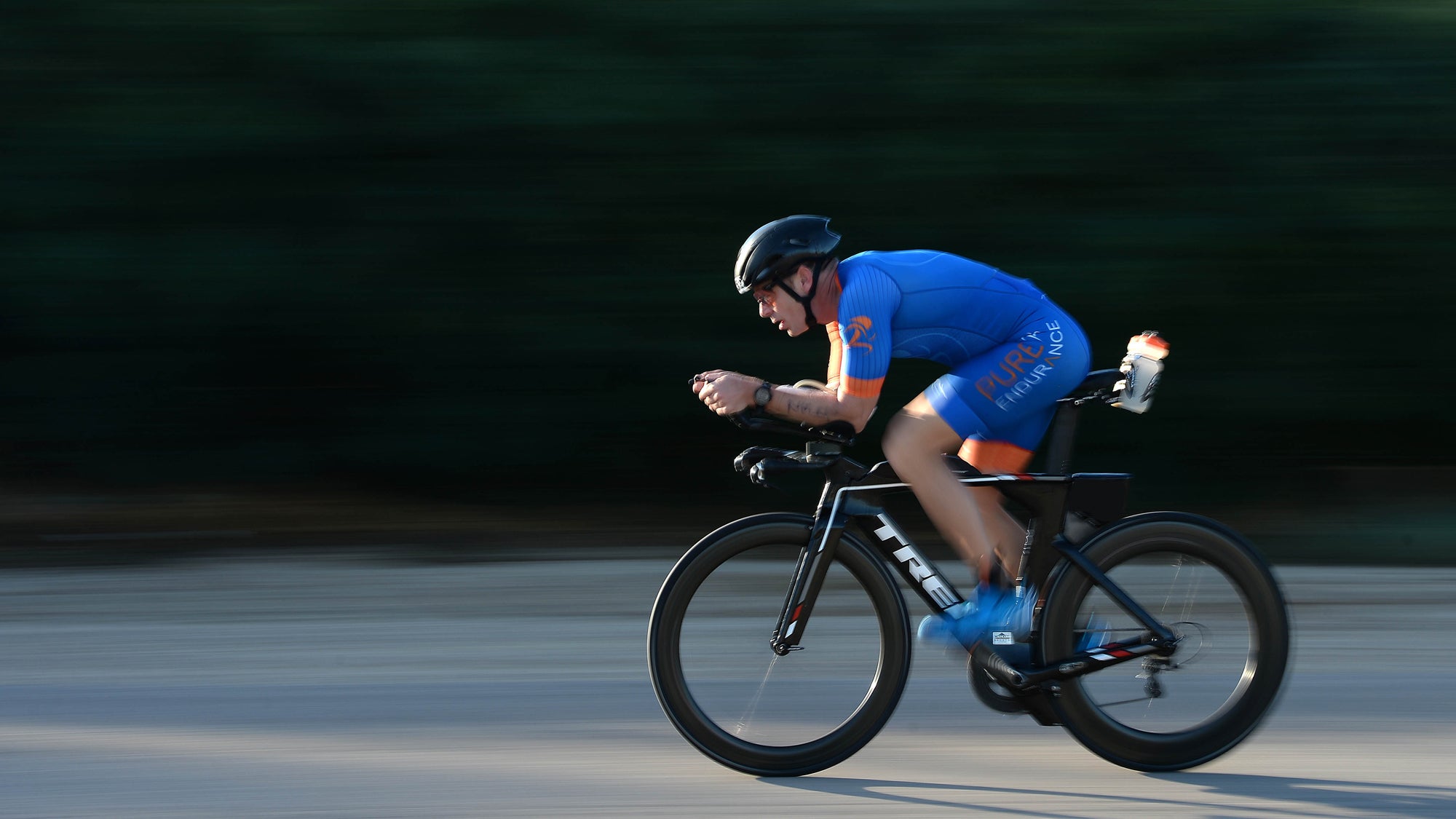4 Ways to Decrease Lower Back Pain After a Bike Ride

The aero position is an important component of any speedy bike leg. To ensure good aerodynamics, there needs to be a marriage between the somewhat-adaptable human body and somewhat-adjustable machine. It’s a great way to achieve some “free speed,” but maintaining the tuck position with minimal movement can be challenging and can cause potential musculoskeletal issues. A common complaint associated with this is lower back pain.
Below are four ways to help decrease lower back problems:
Flexibility/Mobility
Tight hamstrings and restricted movement in the thoracic spine are common causes of lower back pain. Increased tightness can cause accelerated fatigue and undesirable changes in muscle movement patterns. Band-assisted laying hamstring stretches alongside rotational thoracic mobility exercises will keep your body mobile and more cooperative in the tuck position.
Strength
If you’re weak in your glutes, hamstrings, and quads, your lower back can overcompensate. Developing strength in these muscle groups with exercises like squats, deadlifts, and lunges will help build strength endurance and prevent tired legs from having a negative impact on your riding position and causing lower back pain.
Core/Posture
There is a strong correlation between a weak core, poor posture, and lower back pain problems. This can be seen with excessive hip movement while riding, and it can alter your position on the bike when you’re tired. Incorporate planks, side planks, dead bugs, and four-point superman exercises into your gym routine for increased core strength that helps protect your lower back.
Bike Position
In conjunction with flexibility, strength, and core training, it’s important to have your bike position examined. The aim is to adjust the bike to you so that you have to adapt as little as possible. This will help maintain your body’s natural biomechanics and ensure you are as efficient as possible.
Nick Beer is a former elite triathlete from Great Britain. Having competed around the world at a high level, Nick is now a strength and conditioning coach specializing in sports injury rehabilitation.